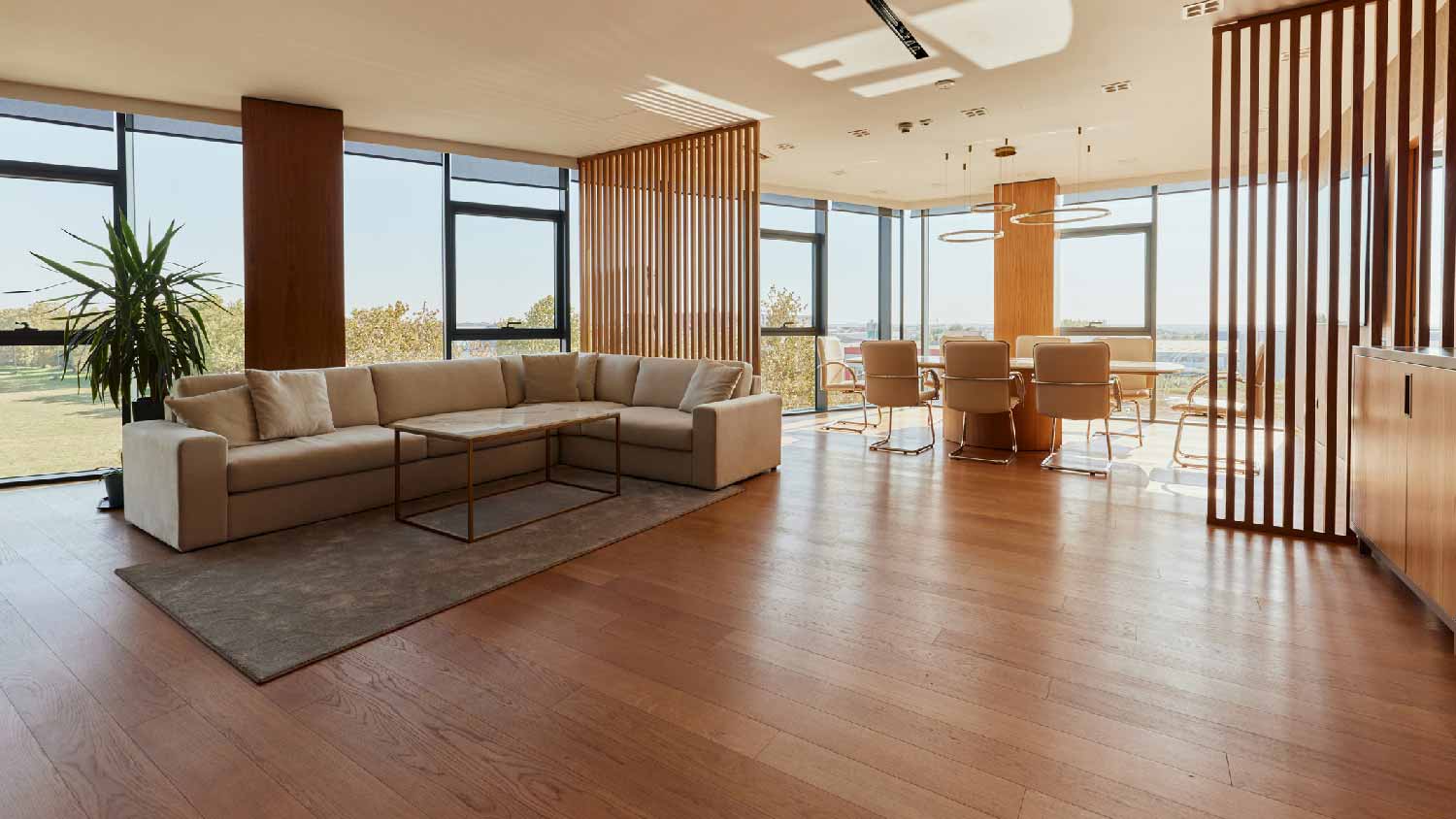
Both materials and labor determine hardwood floor installation costs. This guide breaks down all the prices you need to know before starting your new flooring project.
You can install hardwood floors over tile, but not in every case


Avoid installing hardwood flooring over uneven or damaged tile.
Hardwood should not be installed over tile in bathrooms or basements, where moisture levels are high.
Installing hardwood floors over tile can save time and money.
Removing an old tile floor can be a dusty, dirty job, but can you install hardwood floors over tile? If you long for the classic warmth of hardwood floors, you can leave the tile in place in some circumstances. With proper preparation and conditions, you can have a smoother renovation and stunning hardwood floors without the hard work of breaking and pulling up stubborn tiles.
Well-laid tile is durable and can last for decades, but it can quickly become outdated, and grout can be challenging to keep clean. Hardwood floors can be a valuable upgrade, bringing an organic warmth to the room. However, strong adhesives and mortar can make removing tile a difficult, time-consuming process. Installing hardwood over the tile can be time- and money-saving option if you’ve got some experience with hardwood flooring.

The location and conditions of the tile floor determine whether you can successfully lay hardwood on top. First, the tile floor must be flat, even, and in good condition. Cracked, damaged tiles do not create a sturdy base for the hardwood floor.
Second, the floor must also be on or above the main level and not in rooms with high humidity, like a bathroom, because high moisture levels can cause hardwood to warp. Last, the room needs to have enough ceiling clearance to accommodate the loss of a few inches due to raising the floor. If the space already has low ceilings, hardwood over tile might not be the best choice.
Hardwood or other solid wood floors are not good candidates for wet areas of a home. Liquids can soak into natural wood floors and cause finishes to discolor or fail, particularly at the joints between the boards or near the ends of the boards next to the baseboards.
No, you cannot attach hardwood directly to a tile floor. Hardwood floor installation requires countersinking nails in the first row of planks and nailing the remaining planks to a stable surface. It isn’t possible to drive nails into tile.
Before installing hardwood floors over tile, first lay a plywood sheeting on top of the tile. The plywood sheeting creates a surface that accepts the nails needed to secure and stabilize the hardwood. However, it also raises the floor level, reducing the room height.
If you don’t have much DIY experience, this is the kind of project where you should consider contacting a local wood floor installer. They can make sure the tile doesn’t get damaged during installation, keeping hardwood floor costs within your budget.
From average costs to expert advice, get all the answers you need to get your job done.

Both materials and labor determine hardwood floor installation costs. This guide breaks down all the prices you need to know before starting your new flooring project.

Hardwood floor repair costs depend on the problem. This guide breaks down common costs based on factors like the type of problem, repair method, and whether you hire a pro or DIY.

It’s impossible to keep floors damage-free over the years. Thankfully, the cost to refinish hardwood floors is far less than the price tag to replace them altogether.

Engineered hardwood floors are an alternative to solid wood, but what if they’re showing wear and tear? We’ll help you figure out whether you can refinish them.

Replacing hardwood floor planks without replacing the entire floor is an intermediate DIY project that most homeowners can take on. Learn how in this guide.

Discover who installs hardwood floors. We share the two best professionals to work with to protect your investment in your home.